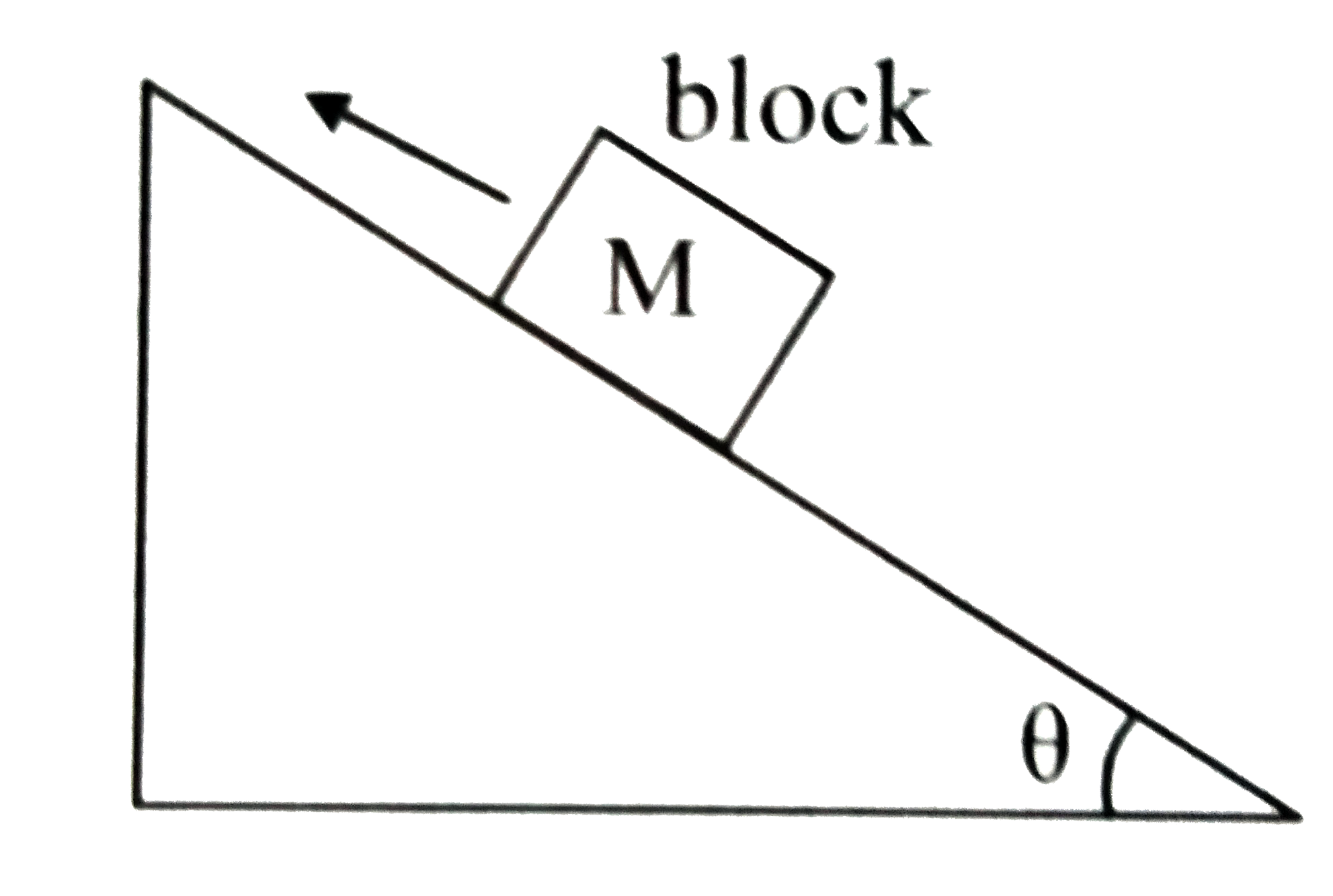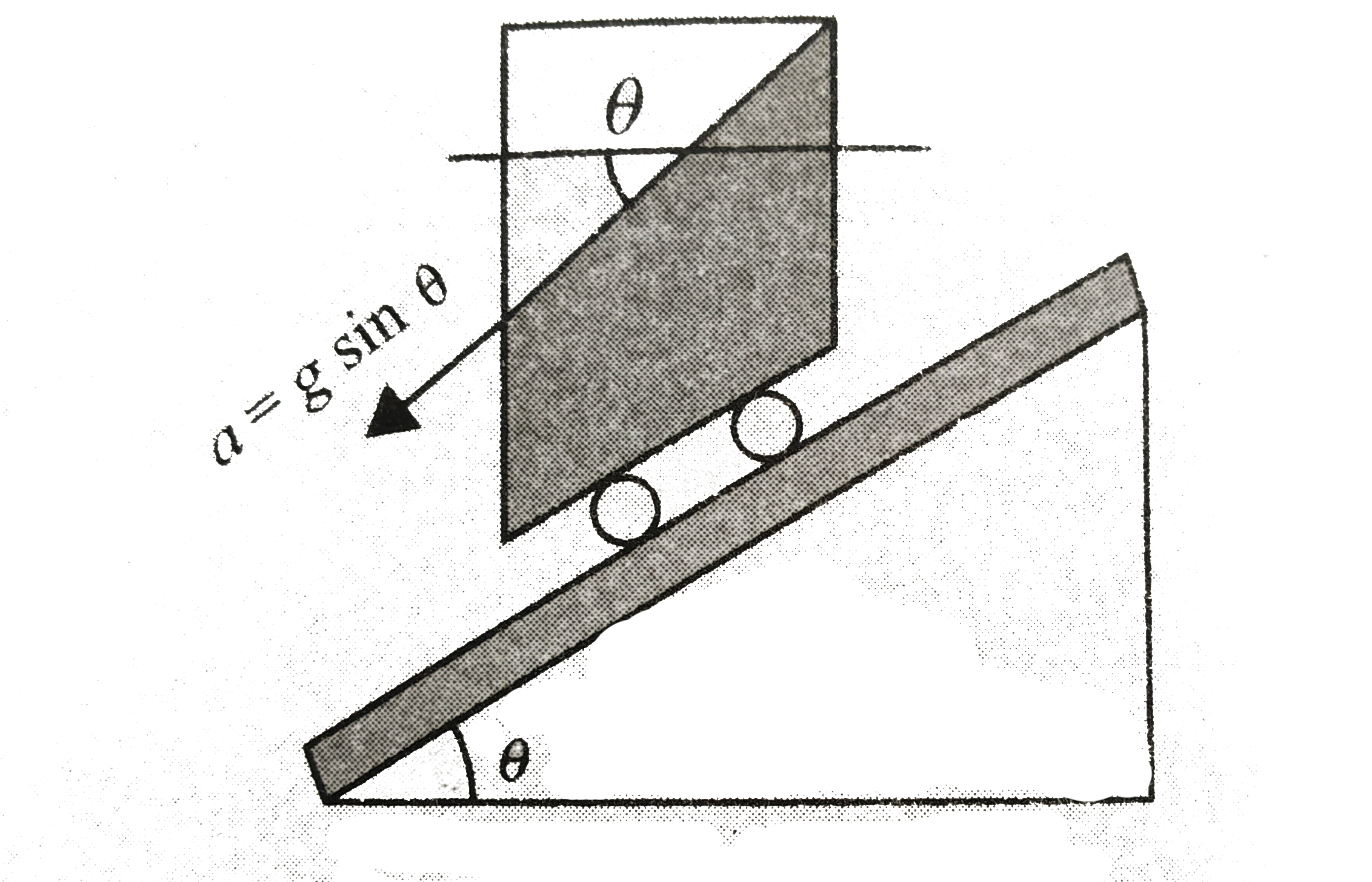A block is at rest on an inclined plane making an angle α with the horizontal. As the angle of the incline is increased the block start slipping when the angle of inclination becomes θ then coefficient of friction is equal to
sinθ
cosθ
tanθ
Independent of θ
The correct Answer is:C
To solve the problem, we need to determine the coefficient of static friction (μ) when a block starts slipping on an inclined plane at an angle θ.
1. Identify Forces Acting on the Block:
- The block experiences gravitational force (mg) acting downwards.
- This force can be resolved into two components:
- Perpendicular to the inclined plane: mgcosθ
- Parallel to the inclined plane: mgsinθ
2. Determine the Normal Force:
- The normal force (N) acting on the block is equal to the perpendicular component of the gravitational force:
N=mgcosθ
3. Static Friction Force:
- The static friction force (F_s) acts up the incline to prevent the block from slipping. The maximum static friction force can be expressed as:
Fs=μsN
- Substituting the expression for the normal force, we get:
Fs=μs(mgcosθ)
4. Setting Up the Equation:
- At the point of slipping, the static friction force equals the component of gravitational force acting down the incline:
μs(mgcosθ)=mgsinθ
5. Canceling Common Terms:
- We can cancel mg from both sides (assuming m≠0):
μscosθ=sinθ
6. Solving for Coefficient of Friction:
- Rearranging the equation gives:
μs=sinθcosθ
- This simplifies to:
μs=tanθ
Final Answer:
The coefficient of static friction (μ) when the block starts slipping is:
μs=tanθ
- The block experiences gravitational force (mg) acting downwards.
- This force can be resolved into two components:
- Perpendicular to the inclined plane: mgcosθ
- Parallel to the inclined plane: mgsinθ
- The normal force (N) acting on the block is equal to the perpendicular component of the gravitational force:
N=mgcosθ
- The static friction force (F_s) acts up the incline to prevent the block from slipping. The maximum static friction force can be expressed as:
Fs=μsN
- Substituting the expression for the normal force, we get:
Fs=μs(mgcosθ)
- At the point of slipping, the static friction force equals the component of gravitational force acting down the incline:
μs(mgcosθ)=mgsinθ
- We can cancel mg from both sides (assuming m≠0):
μscosθ=sinθ
- Rearranging the equation gives:
μs=sinθcosθ
- This simplifies to:
μs=tanθ
The coefficient of static friction (μ) when the block starts slipping is:
μs=tanθ
Topper's Solved these Questions
Similar Questions
An inclined plane makes an angle 30° with the horizontal. A solid sphere rolling down this inclined plane from rest without slipping has a linear acceleration equal to
View SolutionA box is lying on an inclined plane if the box slides when the angle of inclination is 60∘ then the coefficient of static friction of the box and the plane is?
View Solution
Knowledge Check
A block is at rest on an inclined plane making an angle α with the horizontal . As the angle α of the incline is increased the block starts slipping when the angle of inclination becomes θ. The coefficient of static friction between the block and the surface of the inclined plane is or A body starts sliding down at an angle θ to the horizontal. Then the coefficient of friction is equal to
AsinθBcosθCtanθDIndependent of θAn inclined plane makes an angle 30° with the horizontal. A solid sphere rolling down this inclined plane from rest without slipping has a linear acceleration equal to
Ag3B2g3C5g7D5g14A block of mass 2kg rests on a rough inclined plane making an angle of 30∘ with the horizontal. The coefficient of static friction between the block and the plane is 0.7. The frictional force on the block is
A9.8NB0.7×9.8×√3NC9.8×√3ND0.7×9.8N
A block of mas M is resting on an inclined plane as shown in the figure. The inclination of the plane to the horizontal is gradually increased. It is found that when the angle of inclination is θ the block just begins to slide down the plane. What is the minimum force F applied parallel to the plane that would just make the block move up the plane ?

View SolutionAn inclined plane makes an angle of 60∘ with horizontal. A disc rolling down this inclined plane without slipping has a linear acceleration equal to
View SolutionA trolley containing a liquid slides down a smooth inclined plane of angle α with the horizontal. Find the angle of inclination θ of the free surface with the horizontal.

View SolutionA block of mass m is kept on an inclined plane of mass 2m and inclination α to horizontal. If the whole system is accelerated such that the block does not slip on the wedge then :
View SolutionAn inclined plane makes an angle of 60∘ with horizontal. A disc rolling acceleration equal to:
View Solution
